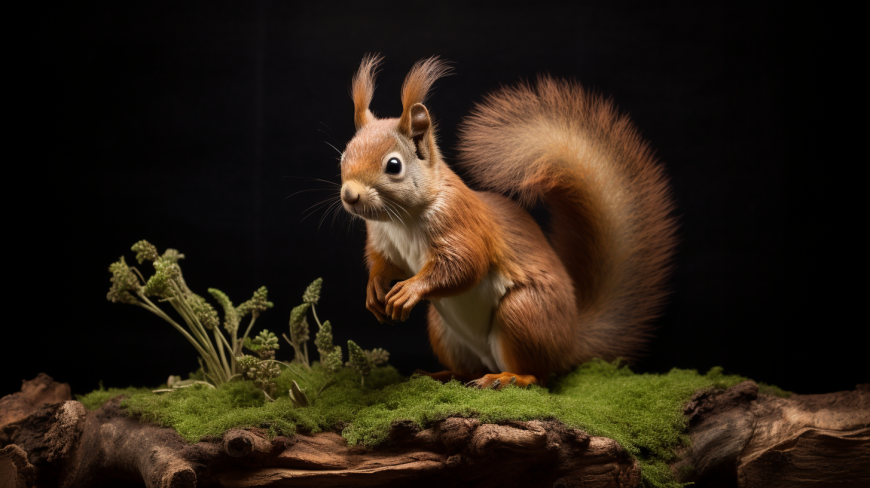Are you ready to embark on a unique journey into the world of squirrel taxidermy? Get ready to unleash your creativity and preserve the beauty of these furry creatures for all to admire.
In this article, we will take you through the fascinating history of taxidermy, equip you with the necessary materials and tools, and guide you step-by-step on how to preserve a squirrel. Whether you’re a seasoned taxidermist or a curious novice, we’ve got you covered.
We’ll also share some tips and tricks on mounting squirrels, so you can showcase your masterpiece with pride. And don’t worry, we haven’t forgotten about the important task of caring for your squirrel mount.
So, if you crave the freedom to explore your artistic side and create something truly remarkable, join us as we delve into the enchanting world of squirrel taxidermy.
Materials and Tools Needed for Squirrel Taxidermy
To get started on stuffing your furry friend, you’ll need a few essential materials and tools.
First, you’ll need a squirrel-sized body form made of foam or wire, which will serve as the structure for your taxidermy project.
Next, you’ll need some sharp scissors or a scalpel to carefully skin the squirrel. Make sure to have a pair of gloves on hand to protect yourself from any bacteria or parasites.
You’ll also need some borax or salt to preserve the skin and keep it from decomposing.
Lastly, you’ll need some soft, fluffy material like cotton or polyester to fill the body form and give your squirrel its shape.
Remember, this is your chance to unleash your creativity and bring your furry friend back to life!
Step-by-Step Guide to Preserving a Squirrel
Preserving a squirrel requires careful attention to detail and the use of specific materials and techniques. To begin, ensure you have all the necessary tools, including a sharp scalpel, wire, and a preserving solution like borax or salt.
First, gently remove the squirrel’s skin by making an incision along its belly and carefully peeling it back. Be cautious not to damage the fur or underlying tissue.
Once the skin is removed, apply the preserving solution liberally to both the inside and outside of the skin.
Next, carefully reposition the squirrel’s body, using wire to support the limbs and maintain a natural pose.
Finally, allow the squirrel to dry completely in a cool, well-ventilated area.
With patience and attention to detail, you can successfully preserve a squirrel to enjoy its beauty for years to come.
Tips and Tricks for Mounting Squirrels
One useful trick for mounting squirrels is to carefully position the limbs using wire to achieve a lifelike pose. Start by choosing a wire that is strong enough to hold the weight of the squirrel, but flexible enough to bend and shape.
Gently insert the wire into the squirrel’s limbs, making sure not to damage the fur or skin. Bend the wire to create a natural stance, mimicking the squirrel’s natural movements. This will give your mounted squirrel a sense of freedom and life.
It’s important to be patient and take your time when positioning the limbs, ensuring that each one is in the right place. With this simple trick, you can create a stunning mount that captures the spirit of the squirrel in its natural state.
Displaying and Caring for Your Squirrel Mount
Take a moment to appreciate the beauty of your squirrel mount and learn how to properly care for it to ensure its longevity and stunning display.
First and foremost, find a suitable location to showcase your mount. Make sure it’s away from direct sunlight to prevent fading and deterioration.
Dust your mount regularly with a soft cloth or brush to keep it looking pristine. Avoid using any cleaning products or liquids that could damage the fur or features.
If you notice any signs of pests or damage, take immediate action to protect your mount.
Remember to handle your squirrel mount with care, as rough handling can cause damage or breakage.
By following these simple tips, you can enjoy your squirrel mount for years to come and proudly display it as a symbol of freedom and appreciation for nature’s beauty.
Frequently Asked Questions
Can I use any type of squirrel for taxidermy?
Yes, you can use any type of squirrel for taxidermy. Whether it’s a red squirrel, gray squirrel, or any other species, as long as you follow the necessary techniques and guidelines, you’re good to go!
Are there any legal restrictions or permits required for squirrel taxidermy?
You’re in luck! Squirrel taxidermy is a wild, carefree art that doesn’t require any permits or restrictions. So go ahead, let your imagination run wild and create your own squirrel masterpiece!
How long does the process of preserving a squirrel typically take?
Preserving a squirrel usually takes around 3-6 months. First, the body is carefully skinned and cleaned. Then, it’s stuffed and shaped, followed by drying and preserving the fur. Finally, the finished piece is mounted and displayed.
Can I mount a squirrel without professional training or experience?
Yes, you can mount a squirrel without professional training or experience. With the right tools and resources, you have the freedom to learn and practice taxidermy techniques on your own.
What are some common mistakes to avoid when mounting a squirrel?
When mounting a squirrel, avoid common mistakes like improper skinning, incorrect positioning of limbs, and using incorrect materials. Remember to research and follow proper techniques to achieve the best results.
Conclusion
So there you have it, folks! You are now equipped with all the knowledge and tools to embark on your squirrel taxidermy adventure.
Who needs regular old hobbies when you can proudly display your preserved squirrel for all to see? Just remember, it’s not for the faint of heart or the easily squeamish.
But hey, in a world full of cookie-cutter hobbies, why not shake things up with a little squirrel taxidermy?
Happy mounting!

